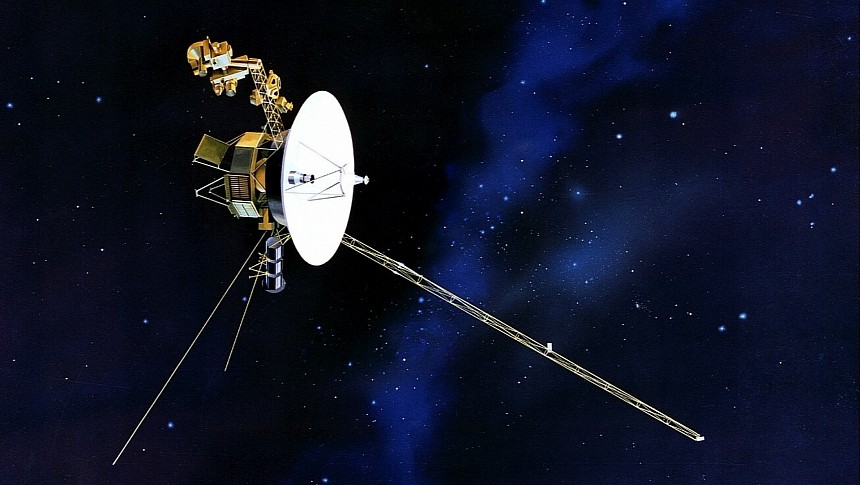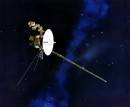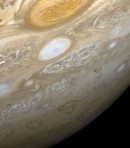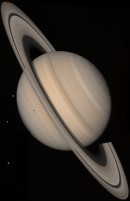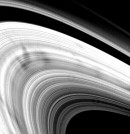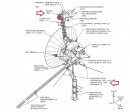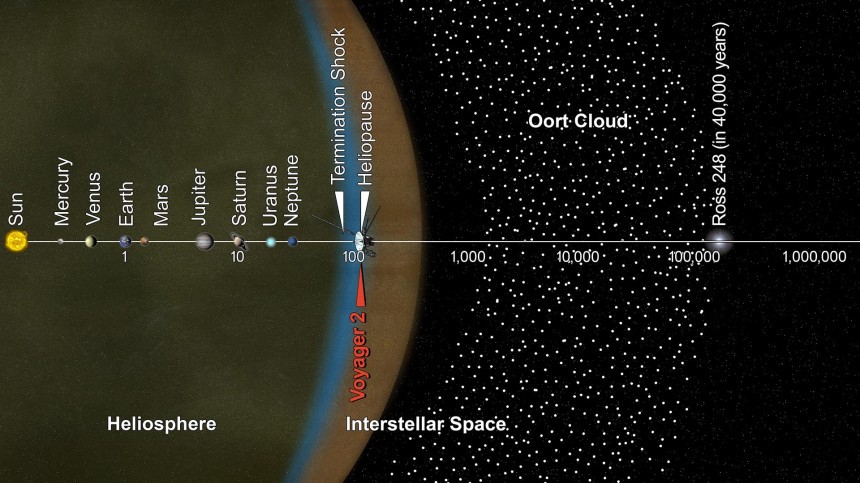After 46 years of hurdling through space like a man-made bat out of hell, you'd almost be inclined to believe the Voyager space probes will simply continue running trouble-free indefinitely until it encounters a flying saucer on its way into the Solar System. But, as NASA is currently learning the hard way, a couple of admittedly very human errors are currently sending one of NASA's oldest and most historic operational space probes into a havoc.
Approximately 133 astronomical units away from Earth, or touching on 20 billion kilometers, NASA was hard at work sending the historic second Voyager probe a series of instructions in order to keep its communications hardware oriented towards its home planet. But in an unanticipated and slightly unfortunate series of events, Voyager 2's latest round of re-orientation maneuvers inadvertently positioned the spacecraft's communications array away from Earth, leaving it unable to transfer information back to mission control for at least a couple of months at a minimum. Such corrective maneuvers are conducted at least a couple of times a year, with the incident occurring last week being the first time it's ever elicited any trouble for NASA.
For the moment, NASA has announced a temporary pause in communication attempts between mission control and the Voyager 2 spacecraft in anticipation of another pre-programmed course correction maneuver anticipated later this year on October 15th. However, NASA's Deep Space Network (DSN) personnel don't anticipate Voyager 2 veering off course in the meantime. But there simply isn't any way to ascertain the craft's current disposition until communication is hopefully re-established and its coordinates in relation to its distance from Earth can be ascertained once again.
Of course, a gradual reduction in operational capabilities is nothing new for either of the two Voyager spacecraft. Since the late 1990s, deficits in electrical power from Voyager 2's radioisotope thermoelectric generators (RTGs) have necessitated a gradual shutting down of each Voyager spacecraft's less-than-necessary instruments as a means of extending the twin probes' service life as much as possible. Key spacecraft components meant to study various traits and features of the Solar System's outer planets it's long since departed have been shut off for as long as 20 years in some cases. As is the case with the probe's Infrared Interferometer Spectrometer (IRIS), meant to scan the thermal properties of the outer gas giant planets, as well as its dual-camera Imaging Science System which has helped to bring us so many iconic photographs of heavenly bodies not studied anywhere near in as much detail as before.
According to NASA's estimates, Voyager 2's capacity to generate electricity will only continue to decrease in the coming years, as will its sibling probe Voyager 1. Further power re-routing efforts conducted just before the DSN's loss of communication with Voyager 2 is hoped to squeeze just a bit more juice out of the nearly five-decade-old spacecraft. Even then, NASA doesn't anticipate that either probe will be able to power any of its scientific instruments for much longer past 2025 or 2026. When this day comes, the last useful piece of equipment on either Voyager probe will be the gold-plated audio disk which, if alien beings could decipher it one day, could be the last vestige of the human race remaining in the very, very distant future.
As for what happens to the probe on an even longer timescale? Well, NASA doesn't anticipate either Voyager probe will directly encounter another star system. Although Voyager 2 could have a semi-close approach to the Andromeda constellation star Ross 248 at a distance of roughly a couple of lightyears away in around 40,000 years or so. On an even longer timescale, Voyager 2 could pass within roughly four lightyears of the Sirius binary star system. However, this isn't considered in the cards for at least another 300,000 years. Unless a close encounter with alien intelligence disturbs Voyager 2's flight path, the probe will likely continue on its path for hundreds of millions, if not billions of years, until interstellar micro impacts and radiation erode at the probe until it's reduced to atoms.
But without going into the realm of the mind-meltingly far away future, the Voyager 2 team can at least rest easy knowing Voyager 2 recently surpassed the now-defunct Pioneer 10 space probe as the second farthest man-made object from its home planet ever constructed, only behind Voyager 1 for the world record. As both Voyager probes enter the twilight of their service life, now is as good of a time as ever to appreciate just how grand of an achievement both probes have been. Not just for NASA, mind you, but for mankind as a whole. Lest we all forget how recently removed we are from relying on burning animal dung and fallen branches as our main source of sustainable energy.
For the moment, NASA has announced a temporary pause in communication attempts between mission control and the Voyager 2 spacecraft in anticipation of another pre-programmed course correction maneuver anticipated later this year on October 15th. However, NASA's Deep Space Network (DSN) personnel don't anticipate Voyager 2 veering off course in the meantime. But there simply isn't any way to ascertain the craft's current disposition until communication is hopefully re-established and its coordinates in relation to its distance from Earth can be ascertained once again.
Of course, a gradual reduction in operational capabilities is nothing new for either of the two Voyager spacecraft. Since the late 1990s, deficits in electrical power from Voyager 2's radioisotope thermoelectric generators (RTGs) have necessitated a gradual shutting down of each Voyager spacecraft's less-than-necessary instruments as a means of extending the twin probes' service life as much as possible. Key spacecraft components meant to study various traits and features of the Solar System's outer planets it's long since departed have been shut off for as long as 20 years in some cases. As is the case with the probe's Infrared Interferometer Spectrometer (IRIS), meant to scan the thermal properties of the outer gas giant planets, as well as its dual-camera Imaging Science System which has helped to bring us so many iconic photographs of heavenly bodies not studied anywhere near in as much detail as before.
According to NASA's estimates, Voyager 2's capacity to generate electricity will only continue to decrease in the coming years, as will its sibling probe Voyager 1. Further power re-routing efforts conducted just before the DSN's loss of communication with Voyager 2 is hoped to squeeze just a bit more juice out of the nearly five-decade-old spacecraft. Even then, NASA doesn't anticipate that either probe will be able to power any of its scientific instruments for much longer past 2025 or 2026. When this day comes, the last useful piece of equipment on either Voyager probe will be the gold-plated audio disk which, if alien beings could decipher it one day, could be the last vestige of the human race remaining in the very, very distant future.
But without going into the realm of the mind-meltingly far away future, the Voyager 2 team can at least rest easy knowing Voyager 2 recently surpassed the now-defunct Pioneer 10 space probe as the second farthest man-made object from its home planet ever constructed, only behind Voyager 1 for the world record. As both Voyager probes enter the twilight of their service life, now is as good of a time as ever to appreciate just how grand of an achievement both probes have been. Not just for NASA, mind you, but for mankind as a whole. Lest we all forget how recently removed we are from relying on burning animal dung and fallen branches as our main source of sustainable energy.
